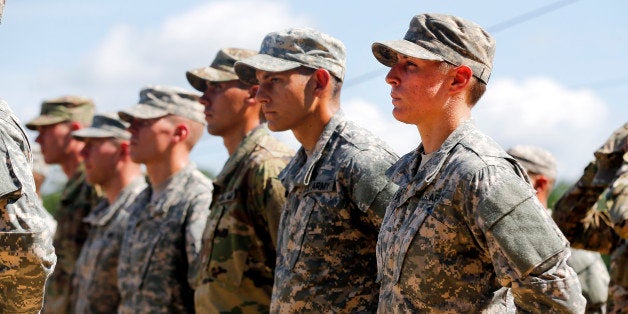
On Thursday December 3rd, 2015 Secretary of Defense Ash Carter rescinded the explicit policy banning military women from serving in combat roles. This change in policy represents a significant departure from traditional military policy. Many people will view this as the final solution to gender inequality in the military. We share enthusiasm for this momentous change but are tempered by the difficult reality of achieving cultural change within the military.
Policy change is the first step towards full gender integration, but implementing this policy will require an ongoing focus on organizational culture aimed at shaping daily practices. Over the past two years, with funding from The Army Research Institute and the Women's Foundation of Greater Kansas City we have explored the potential benefits and barriers of gender integration of Special Forces (commonly known at the Green Berets). In addition to studying explicit policies that officially structure gender inequality, we also center our work on investigating the unofficial everyday activities that continue to exclude women from ascending to leadership roles.
Overall, we found a great deal of resistance to gender integration in the military. To give you an idea of the scope, 84 percent of Special Forces Operators in our study disagree that women should be allowed to serve in all combat jobs in Special Forces. Through our research, we discovered that most of the resistance to integration is rooted in traditional gender stereotypes that are often invisible to military personnel in their daily routines.
We refer to this invisibility as gender oblivion. Gender oblivion describes the covert ways that gender stereotypes influence everyday practices of the individual and organization. Most of the time, gender oblivion is not malicious or done to actively exclude or harm women. But the end result is that it does both.
For example, in our study, Susan, an active soldier in the Army, explained that men are often seen as having greater expertise in jobs, despite receiving the same training as women for the position.
"My [co-worker] was a mechanic. That was her job. She had exactly the same training as a male mechanic in the Army. But any time anything on the base mechanical would happen they'd always go to the male mechanic first. Even after another civilian mechanic told the team leader, 'Hey she knows what she's talking about. She's been doing this a little bit longer than him.' The team leader was like, 'Get out.'"
This story illustrates gender oblivion. Susan's co-worker was viewed as having less expertise because she performed a job traditionally associated with men. Gender oblivion frames not only policy, but also routine practices within the organization, like women being passed over for work experiences such as Susan's colleague.
Without examining gender stereotypes, efforts to eliminate gender inequality (and fully integrate women) will not succeed through policy change alone. Our research points to three steps the military must take in order to successfully repeal the combat exclusion policy.
First, the invisible barriers to gender equality must be identified by leaders in the organization. Engaging in a constructive dialogue about how gender oblivion shapes workplace experiences is necessary for identifying consistent barriers to gender equality. We can change the paradigm through which we understand the gendered challenges facing the workplace only after we aware of them.
Second, strategies for organizational change must include training on gender stereotypes and norms because they underscore most obstacles to gender integration. Women working in the military often view career limitations as individual problems arising from individual deficiencies. However, the reality is that organizational culture, including many daily practices, reinforces gender inequality in the military.
Finally, in order to maintain any positive change in the organization, mentorship and support networks for women need to be cultivated and reinforced. Men often take it for granted that they have traditionally received mentorship and support. Leaders must be intentional about cultivating these resources for women. In the workplace we often talk about mentoring as a resource that comes from people who have shared our work and life experiences, but in reality it is the focus on career skills that is important with mentorship. Men can make great mentors to women, but often employees don't have the explicit conversations about what we need and want from mentoring relationships. These networks also provide a way for the organization and its leaders to continue to identify, and work to improve ongoing issues.
Gender inequality is a structural and organizational problem. Policy change alone cannot fix it. Military leaders must improve the organizational culture that shapes people's experiences working inside the organization.
As Carmen, an active soldier in the Army, reminds us:
"It's not just women's minds that we need to change about how we're worth something and we need to project ourselves professionally and confidently. There are two pieces to the puzzle here."
For a link to our full report for the Women's Foundation of Greater Kansas City click here: http://www.womens-foundation.org/news/project-diane